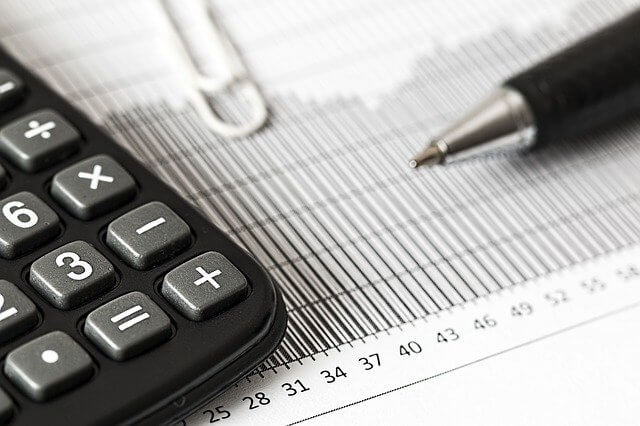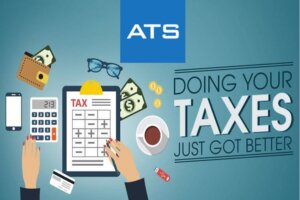Every business and company holds assets and liabilities. Assets are crucial for a company because that is what they rely on for the future of their business. Over the life term of the asset, its value is considered as an expense for the business. To understand more about asset depreciation, read the post further. Every crucial piece of information that you should know about asset depreciation is stated below.
What is Asset Depreciation?
Depreciation is defined as the reducing value of a fixed asset owned by a company over time. A business doesn’t record the whole deduction cost altogether once a year, but rather, it is recorded at frequent intervals over time. The written asset depreciation helps to have more control over the finances of a business. Recording a business’s asset depreciation is imperative for every business.
What Assets Can Be Depreciated?
A business can depreciate both tangible and intangible types of assets like machinery, vehicles, equipment, computers, furniture, computer software, patents, and copyrights. Land is the only kind of fixed asset of a company that cannot be depreciated over time. As time passes, the value of land will only get appreciated.
Example of Depreciation: If the business buys a car worth CA$30,000 and its usage is expected for 10 years, then the value will depreciate the asset with the depreciation expense of CA$3,000 every single year for a time of 10 years.
Methods to Calculate Depreciation
For calculating asset depreciation, three common methods are generally practiced – the straight-line method, units of production method, and double-declining balance method.
Three main inputs are required for the calculation:1) Useful Life – This is the period of time in which the company considers the asset to be productive.
2) Salvage Value – When the fixed asset is sold after its useful life, the reduced amount at which the company will sell it, would be considered salvage value.
3) Cost of the Asset – This aspect includes taxes, shipping, and preparation or setup expenses.
The three methods used for calculating are explained below:
1) Straight-line Method
This is the simplest and most commonly used method to calculate the expenses of depreciation. The method involves a simple allocation of the same depreciation rate every year over the useful life of the asset. The formula for straight-line depreciation is:
Annual Depreciation Expense = (Asset Cost – Residual Value)/Useful life of the Asset
Example – If a company purchases machinery valued at $10,000, with a residual value of $2,000 and it has a useful life of 10 years. Then:
Annual Depreciation Asset = (10,000 – 2,000)/10 = $800
With this, the company will enter CA$800 under the Depreciation Expense over the machinery’s useful time of 10 years. The depreciation expense is stated under the income statement as the reduction in revenues.
2) Units of Production Method
Unlike the straight-line method, this is a two-step method. Under this method, an equal amount of expense is given to each unit that is produced or service rendered by the asset. This makes the method useful for the production line. The calculation in the method is based on the output capability of the asset instead of the number of years.
The two steps:1) Calculate Per Unit Depreciation:
Per Unit Depreciation = (Asset Cost – Residual Value)/Useful life in Units of Production2) Calculate the total depreciation of actual units produced:
Total Depreciation Expense = Per Unit Depreciation x Units Produced
Example – An XYZ company buys a piece of machinery for CA$4,000 with an expected production of 18,000 units over its useful life, and it has a residual value of CA$400. Its output is 400 units.
Step 1 – Per Unit Depreciation = (4,000 – 400)/18,000 = $0.2
Step 2 – Total Depreciation Expense = 0.2 x 400 = $80
With this, the depreciation expense is shown as CA$80. The unit depreciation that is found, that same can be applied for future output runs.
3) Double Declining Balance Method
Among the others, this is also one of the common methods that companies use to derive the depreciation expense of a fixed asset. This method is a type of acceleration method. It calculates the depreciation expense high in the first year and reduces the expense of depreciation in the following year.
Formula:
Depreciation = 2 x Straight Line Depreciation Present x Book value at the beginning of the accounting period
Book Value = Cost of the Asset – Accumulated Depreciation
Example – Company XYZ buys machinery on April 1, 2016, at the cost of $10,000. The machinery is predicted to have a useful life of 5 years, and the salvage value is $1,400. The company will consider depreciation for the nearest month. Now, calculate depreciation expenses for the years 2016, 2017, 2018 with the declining balance method.
Useful Life = 5
Straight line depreciation percent = ⅕ = 20% per year
Depreciation rate = 20% x 2 = 40% per year
Depreciation for the year 2016 = $10,000 x 40% x 9/12 = $3,000
Depreciation for the year 2017 = ($10,000 – $3,000) x 40% x 12/12 = $2,800
Depreciation for the year 2018 = ($10,000 – $3,000 – $2,800) x 40% x 9/12 = $1,680
The depreciation value for the year 2020 would be CA$112, it will keep the book value the same as the salvage value. (CA$1,512 – CA$1,400 = CA$112) after this calculation, the depreciation recording should stop.
Asset depreciation is a must for every business because some asset taxes may be deducted immediately, and some have long life terms whose taxes are deducted over the years of life. You only stop the depreciation of an asset when it has reached its useful life. Let one of Alberta’s leading accounting firm provides you with its services. Our highly qualified and experienced team of accountants advises new and established businesses on asset depreciation along with trusted and accurate accounting, tax planning/preparation, and auditing services. For more information about our accounting services, book your free 15-minute consultation by calling us at 780-484-4006 or contacting us online.




